Jazib Mehmood, Student, Jamia Ahmadiyya International Ghana
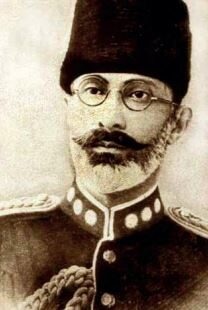
The Promised Messiah’s prophecies have always been subjected to great scrutiny. Ill-intentioned people seek to disprove the divine nature of the Promised Messiah’s claim, and in doing so, they try to tear apart the prophecies of the Promised Messiahas, which are undoubtedly one of the greatest proofs of his truthfulness. However, such people cannot deny a prophecy when it is fulfilled in a manner that is manifestly clear to the world.
Sometimes, such prophecies only manifest themselves when they are fulfilled. This makes them truly remarkable. Since the one making the prophecy is himself unaware of the manner in which it would be fulfilled, the divine origin of the prophecy is proven beyond all doubt. As the Promised Messiahas states, “a prophecy is only truly explained once it has come to pass.” (Barahin-e-Ahmadiyya Part V [English], p. 118)
One such prophecy was made by the Promised Messiahas in 1905. This prophecy had international implications, and its subtlety makes it a truly remarkable aspect of the divine origin of the Promised Messiah’s claim. On 3 May 1905, Allah revealed the following to Hazrat Ahmadas:
آہ نادر شاہ كہاں گیا
“Alas; where has Nadir Shah disappeared?” (Al Hakam, 10 May 1905, Vol. 9, No. 16, p. 1, Tadhkirah [English], p. 748 [2018])
No one knew what this meant. Hazrat Ahmadas did not elaborate or offer any explanations as to whom Nadir Shah was and how he had disappeared. This revelation remained unexplained for nearly 25 years.
It was only when events suddenly shifted in Afghanistan that this prophecy came to mind, and Hazrat Musleh-e-Maudra declared it fulfilled and wrote a detailed article about the happenings in Afghanistan, and how Allah had continuously revealed to the Promised Messiahas about events that would occur there in the future.
For further details about the prophecy that are not discussed here, please see Hazrat Musleh-e-Maud’sra article in the original Urdu: Aah, Nadir Shah Kahan Gya, Anwar-ul-Ulum, volume 13, pages 121–140, originally published in 1933 in Al Fazl Qadian on 9, 21, 30 November 1933, or an English translation – Kabul Witnesses a Sign.
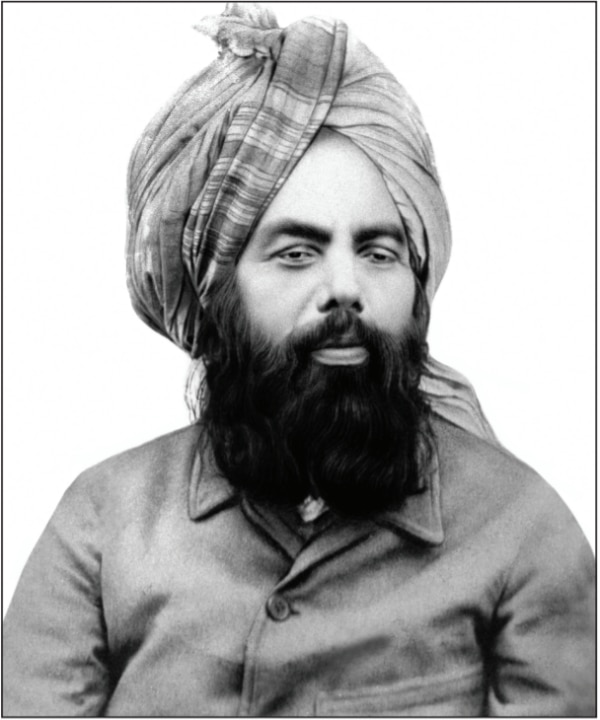
Who was Nadir Shah?
There are two Nadir Shah’s popular in modern history. One is the Nadir Shah who was the founder of the Afsharid dynasty of Iran and one of the most powerful rulers in Iranian history, ruling as shah of Iran from 1736 to 1747. (The Sword of Persia: Nader Shah, from Tribal Warrior to Conquering Tyrant by Michael Axworthy)
The Nadir Shah we intend to discuss started out in life as Nadir Khan. He was a relatively unknown man who was born and grew up in British India.
Although his family were descendants of Afghan aristocrats, they had been exiled from Afghanistan by the reigning monarch, Amir Abdul Rahman after he realised their aspiration for power. In 1900, he returned to Afghanistan when his grandfather was authorised to return from exile. (A History of Afghanistan, [London: Macmillan & Co. Ltd. (1940)], Vol. 2, p. 322)
Soon afterwards, in 1901, the king died and crown-prince Habibullah was crowned king. Habibullah Khan had nothing against Nadir Khan. He was appointed to command a regiment of Household Cavalry and was promoted to general, and sent to suppress the Mangal rebellion in 1912 (Ibid). This was a success and he was made commander-in-chief of the Afghan army. (Afghanistan: A History from 1260 to the Present Day [London: Reaktion Books. (2018)], p. 418)
Speaking about his early life in Afghanistan, Hazrat Musleh-e-Maudra writes:
“Nadir Khan was gifted with intelligence and sagacity in such an unusual measure that he proved his extraordinary fitness for the military post to which he was appointed. Moreover, God brought about his rapid promotion in this way. Rebellion broke out in the southern provinces and the Royal forces that were despatched to quell it suffered a heavy defeat.
“Thereupon Nadir Khan was entrusted [with] this difficult task. His efforts to suppress the rising met with signal success. Resultantly, Nadir Khan received a promotion and began generally to be looked upon as one of Afghanistan’s wisest generals.” (Kabul Witnesses a Sign, p. 9)
Later, Habibullah even married one of Nadir Khan’s sisters, thus solidifying their relations, and consequently, the Nadir family moved to Afghanistan. (A History of Afghanistan, [London: Macmillan & Co. Ltd. (1940)], Vol. 2, p. 266, footnote)
The new king’s enmity for Nadir Khan
Habibullah Khan was assassinated in 1919, causing the new King of Afghanistan, Amanullah Khan, to condemn Nadir and his brothers – his own half-brothers – for treason, since they were said to be responsible for his safety. Nadir Khan was therefore arrested and sent to Kabul under heavy guard. (Afghanistan: A History from 1260 to the Present Day [London: Reaktion Books. (2018)], p. 451)
A short while later, however, he was exonerated by the court and reappointed as Commander-in Chief, Minister for War and Tribal and Frontier Affairs. Nadir’s three brothers also suffered no penalty and retained their military rank. Shah Wali Khan, Nadir’s youngest brother, even married one of King Amanullah Khan’s daughters.
Although the family largely escaped punishment, Amanullah kept Nadir Khan far away from Kabul, posting him first to Khost and later to remote Qataghan. The most likely reason for them not facing any punishment is that they were popular with the army, and any rash moves against them might have incited the army to revolt. (Ibid)
Amanullah Khan’s radical changes
Meanwhile, Amanullah began making radical changes in Afghanistan. He styled himself a “revolutionary ruler”, and among other things, demanded that Afghans wear Western-style suits and hats in the government precincts of Kabul, changed the traditional Friday weekly holiday to Thursday, required compulsory coeducation in elementary schools and prohibited polygamy among government officials. (Afghanistan, [Princeton, New Jersey: Princeton University Press (1980)], p. 468)
He also pushed to abolish the veil, and to end segregation of men and women. Condemning the existing religious structure, he said he was determined to “purge the practice of Islam in Afghanistan of its folk ways, traditional taboos, and superstitions”. (Afghanistan: A Cultural and Political History [Princeton, New Jersey: Princeton University Press, (2010)], p. 189)
Nadir Khan moves to France
Nadir Khan was an uneasy spectator to these events. He, like many conservatives in Afghanistan, had reservations about Amanullah’s radical changes. He felt that Amanullah was being too quick-minded, and that the king ought to hold consultations before making moves.
In 1924, he expressed his feelings to the king. However, this did not go well, and an angry Amanullah Khan sent Nadir into what was, in effect, exile; appointing him ambassador to France. About a year later, when the king annulled the engagement of his sister to Nadir Khan’s brother, Nadir resigned his post in response and retired to Nice. (Afghanistan: A History from 1260 to the Present Day [London: Reaktion Books. (2018)], p. 480)
The king is overthrown – but Nadir Khan falls sick
A few years passed, and in 1929, Habibullah Kalakani (commonly referred to as Bacha-e-Saqqa), an army officer of the Afghan Army, overthrew Amanullah Khan. Nadir Khan, who was recovering from an attack of pleurisy at Nice, immediately made plans to return to Afghanistan, despite his ill health.
According to the memoirs of Shah Wali Khan, Nadir Khan’s brother, Nadir was not at all well during the journey. He writes that he “was too weak to leave his bed or even sit properly, and had a high temperature”. (My Memoirs by Shah Wali Khan [Kabul, 1970], p. 43)
It got to the point that Nadir feared the worst, and asked his brothers to bury him in any Islamic city along their journey, and to devote themselves to “quelling the uprising and extinguishing the flames of civil war […]”. (Ibid, p. 44)
The next morning, however, his health greatly improved and the group continued their journey at ease. However, when they reached Peshawar, the soon-to-be king’s health took a bad turn. Although he desperately wanted to return home, his health prevented him from making the journey, and he was forced to remain in Peshawar for fifteen days.
Hazrat Musleh-e-Maudra, speaking of Nadir Khan’s illness, writes:
“If he had not been taken ill and had joined Amanullah Khan at once in his struggle against Bachcha-e-Saqqa and had defeated him, Amanullah Khan would evidently have remained King of Afghanistan and all possibility for Nadir Khan to have become the Shah of that country would have been totally eliminated.
“But God prolonged his illness and did not give him victory over Bachcha-e-Saqqa until Amanullah Khan, after suffering a crushing defeat, made a hurried exit from Afghanistan. The protracted illness of Nadir Khan in Peshawar and his inability to proceed at once to Afghanistan was a divine plan to fulfil the Promised Messiah’s prophecy and constituted, thus, by itself a remarkable and standing miracle.” (Kabul Witnesses a Sign, p. 11)
An unprepared Nadir Khan
With Amanullah Khan out of the picture, it was a battle between Habibullah Kalakani and Nadir Khan. However, Nadir suffered many defeats and it was immediately apparent that he had started his expeditions on a wing and a prayer. Shah Wali Khan writes:
“We fully knew that Habibullah, our opponent, was formidable and in full possession of the royal treasury and arsenal, while our insignificant caravan was totally devoid of everything that could help us in the gigantic task lying ahead.
“We had no money and no weapons, and had to fight a powerful army, fully equipped and well organized. But we were hopeful of our final victory; to us it was a struggle against ignorance and tyranny.” (My Memoirs by Shah Wali Khan [Kabul, 1970], p. 54)
And it was a struggle indeed. Nadir had been in Afghanistan for nearly five months or more, but had suffered only defeats. However, he did not back down. A historian writes:
“Many men would have thrown up the sponge at these repeated reverses, but Nadir, in spite of his bad health, remained undismayed.” (A History of Afghanistan, [London: Macmillan & Co. Ltd. (1940)], Vol. 2, p. 320)
His first actual victory was in late August 1929, when he had been furiously fighting for many months. (Ibid) Hazrat Musleh-e-Maudra also constituted his lack of resources to be a sign. He writes:
“With such limited and confined means to fight and inflict a crushing defeat on an enemy like Bachcha-i-Saqqa who had vanquished the ex-King Amanullah Khan with all his mighty forces; armaments and ammunitions, was no ordinary business and constituted alone a great and wonderful sign.
“It was to fulfil the revelation that God had vouchsafed to His Messenger and Messiah long ago that conditions in Afghanistan so shaped themselves that in spite of his complete helplessness and broken health, and in spite of disorder, chaos and anarchy that reigned in the country Nadir Khan was successful in defeating Bachcha-i-Saqqa.” (Kabul Witnesses a Sign, p. 12)
Kingship is thrust upon him
Nadir Khan had declared that he only wanted to “establish peace and liberate my people from tyranny” and it was up to the tribes to decide who became king. Therefore, for the longest time, he refused multiple offers to become king of Afghanistan. (My Memoirs by Shah Wali Khan [Kabul, 1970], p. 47)
An article in Islah, a weekly paper Nadir Khan had established in Afghanistan, said:
“Nadir Shah and his family did not arrive in Afghanistan to reign but rather to save the country. He did not want to become King. Kingship was thrust upon him ‘in the presence of the delegates of the nation and the diplomatic corp’. It was under the repeated pressures of the jirga [council] that he accepted the burden of his reign.” (The Emergence of Modern Afghanistan: Politics of Reform and Modernization [Stanford, California: Stanford University Press (1969)], p. 289)
Consequently, Habibullah Kalakani was able to cling to power in Kabul for nearly nine months. Fighting continued and on 10 October 1929 Kabul was captured. Nadir Khan arrived in the city on the 15th and finally announced he was prepared to accept the throne if it was the wish of “popular opinion”. (Afghanistan: A History from 1260 to the Present Day [London: Reaktion Books. (2018)] p. 508)
Hazrat Musleh-e-Maudra remarks:
“At last it came to pass exactly as was decreed long ago. That is to say, more than 25 years after the prophecy (referred to above) Nadir Khan, for whom, six months before there was not the remotest possibility ever to acquire this very exalted position, was unanimously elected by the Afghan people as their King and the arbiter of their destinies.
“In spite of the fact that he had no desire for the throne and in spite of the fact that he left the decision fully and completely in the hands of the Afghan people to choose their own Ruler, the lot fell upon him and he alone was considered fit to discharge fully and adequately the very high and critical responsibilities attached to the office of a king; and who could, in reality, be considered fit for this very exalted position except he whom God had singled out for it?” (Kabul Witnesses a Sign, p. 13)
Nadir Khan becomes “Nadir Shah”
On 16 October 1929, the victorious chiefs acclaimed Nadir Khan as the new ruler. A full loya jirga – grand council – later endorsed the choice in September 1930, naming him Nadir Shah. (A Brief History of Afghanistan, 2nd ed. [New York: Infobase Publishing (2010)], p. 114)
In mid-November 1929, the British formally recognised Nadir’s rule and began providing him with money and arms to stabilise his government. (The Origins of Conflict in Afghanistan [Westport, Connecticut: Praeger (2003)], pp. 51–60)
Two years into his rule, peace reigned in Afghanistan. Nadir Shah rescinded the secularisation of the laws and the abolition of purdah which Amanullah had so radically placed. He felt the necessity for reforms, but grasped the fundamental importance of “hastening slowly”. (A History of Afghanistan, [London: Macmillan & Co. Ltd. (1940)], Vol. 2, p. 324)
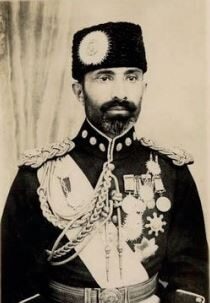
Why did Nadir Khan change his name?
The prophecy was about Nadir Shah. If Nadir Khan had chosen to maintain his name, the prophecy could have been disputed. However, when Nadir took over the country, he deliberately changed his name to Nadir Shah and had a ceremony to commemorate the occasion.
But why did he change his name?
Since Nadir Khan’s family had never exactly been considered royalty before, it is most likely for this reason Nadir renamed himself Nadir Shah. While according to some, he needed to “symbolically distance himself from Amanullah’s line because they had a stronger claim to the throne than his people did. A change in titles made that a bit less obvious.” (Afghanistan: A Cultural and Political History [Princeton, New Jersey: Princeton University Press. (2010)], pp. 195–196)
Hazrat Musleh-e-Maudra, commenting on this, writes:
“Indeed by virtue of being the ruler and monarch of this independent country Nadir Khan was a King in the real and full sense of the word. But in the word of God he was not designated as Shah Nadir Khan but as Nadir Shah.
“If Nadir Khan had only assumed the title of Shah Nadir Khan, even then the prophecy, to all intents and purposes, would have been considered by every sane and dispassionate person to have been fulfilled and it would have legitimately been believed that in the revelation Shah Nadir Khan had been described for brevity’s sake as Nadir Shah.
“But God had so willed that this great prophecy should become literally true. He, therefore, provided extraordinary means to bring it about and Nadir Khan himself came to conceive a desire that he should in future be known as Nadir Shah.” (Kabul Witnesses a Sign, pp. 13–14)
Huzoorra further stated:
“O ye who love truth! Dare you deny that this unusual change of Nadir Khan into Nadir Shah was in compliance with the design and plan of the Great God […] The same God who had in His revelation given Nadir Khan the name of Nadir Shah made Nadir Khan and his nobles conceive the idea that though it was contrary to the established practice, though the word ‘shah’ could be and was actually used before the name of a King, though Amanullah in spite of being the first ‘Shah’ of Afghanistan did not propose to be known as Amanullah Shah and though the use of the word ‘Khan’ is not incompatible with and derogatory to the dignity of a King, yet Nadir Khan should be known and called Nadir Shah so that in accordance with the divine prophecy not only should Nadir Khan become a king but should take for himself the name of Nadir Shah.” (Ibid, pp. 14–15)
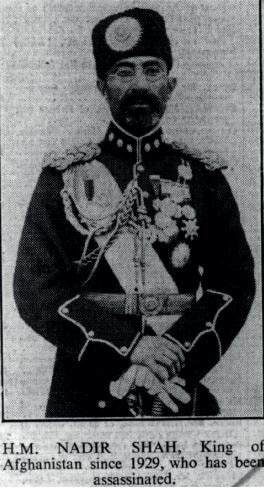
A prophecy fulfilled
At this juncture, it is necessary to point out that when Nadir Khan renamed himself Nadir Shah, the Ahmadiyya Muslim Community took immediate notice. Many affirmed that the prophecy of the Promised Messiahas had been fulfilled.
Hazrat Musleh-e-Maudra had absolutely no doubt that this prophecy had already manifested itself at this stage. At his direction, Hazrat Maulvi Sher Alira wrote an article in The Review of Religions detailing the prophecy and its fulfilment.
Hazrat Maulvi Sher Alira wrote that when the king was overthrown, people were crying out for Nadir Khan (literally asking, “Where is Nadir Khan?”), who they believed could save them from disorder and chaos in their country. This he did, and since the prophecy was about Nadir Shah, not Nadir Khan, his ascension to the throne was most definitely a fulfilment of the prophecy.
Incredibly, however, Maulvi Sher Alira Sahib believed that this prophecy had two aspects; one aspect has been mentioned above, and the other was yet to be fulfilled. He wrote:
“The second rendering conveys the idea that some misfortune will befall the person named and his loss will be deeply mourned.” (The Review of Religions, February 1930, Vol. 29, No. 2, p. 44)
Assassination
It was 8 November 1933, and the king was on the grounds of the Dilkusha Palace. He had ruled the country for almost exactly four years. And on this day, he was holding an awards ceremony for some high school students in the palace. (Afghanistan: A History from 1260 to the Present Day [London: Reaktion Books. (2018)], p. 528)
The ceremony was going just fine, but a student who had held a personal grudge against the king, had noticed that security was lax. He had quickly wound up a gun in a handkerchief, and was determined to kill the king.
During the ceremony, he stepped forward and shot Nadir Shah three times at point-blank range. Nadir Shah was instantly killed. Abdul Khaliq was a sixteen-year-old eighth-grader in a local German high school when he committed the murder. (Afghanistan, [Princeton, New Jersey: Princeton University Press (1980)], p. 476)
As the king fell to the ground, chaos ensued. Khaliq shouted that he was the one who killed Nadir when soldiers detained the students. Evidently, he did not want innocent students to suffer. (Dynamics of Political Development in Afghanistan: The British, Russian, and American Invasions, [New York: Palgrave Macmillan (2010)], p. 43)
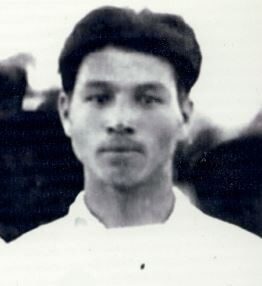
Upon his assassination, Hazrat Musleh-e-Maudra sent a telegram to Mohammed Zahir Shah, Nadir Khan’s son and successor as king. Huzoorra expressed his remorse at the death of his king, and hoped that although the circumstances were grim, the new monarch would continue the generous works of his father, Nadir Shah. (Al Fazl Qadian, 14 November 1933, Vol. 21, No. 59, p. 1)
In reply, the Shah thanked Huzoorra for his sentiments, recognising the Ahmadiyya Muslim Community and Hazrat Musleh-e-Maudra as its leader. (Al Fazl Qadian, 28 November 1933, Vol. 21, No. 65, p. 2)
Thus did the reign of Nadir Shah come to “an abrupt end”. (Afghanistan: A History from 1260 to the Present Day [London: Reaktion Books. (2018)] p. 508)
In this way, a magnificent prophecy of the Promised Messiahas was fulfilled in the most remarkable circumstances.
Hazrat Mirza Bashir Ahmad Sahibra, commenting on this prophecy, writes, “The untimely and sudden death of Nadir Shah prompted many Afghans and others in the world to say: ‘Alas, where has Nadir Shah disappeared[?]’.” (Tadhkirah, p. 748 footnote [2018])
Speaking about the majesty of this prophecy, Hazrat Musleh-e-Maudra writes:
“To predict the rise to the throne of an ordinary person by itself constitutes a great sign. But to predict, in addition, that he shall rise to it on the ruin of the old royal family and shall rule effectively the country [whose] people are quite unused to reform, and by the good and solid work he shall do for the peace, progress and prosperity of his country he shall continue to rise in the esteem and affection of his people and when he shall die, his death shall be received with feelings of deep and intense grief, is a sign whose grandeur and majesty it is impossible to deny.” (Kabul Witnesses a Sign, pp. 17–18)

